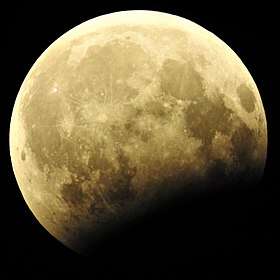April 1949 lunar eclipse
A total lunar eclipse took place on April 13, 1949.
| Total Lunar Eclipse April 13, 1949 | |
|---|---|
| (No photo) | |
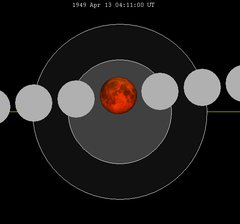 The moon passes west to east (right to left) across the Earth's umbral shadow, shown in hourly intervals. | |
| Series | 121 (52 of 84) |
| Duration (hr:mn:sc) | |
| Totality | |
| Partial | |
| Penumbral | |
| Contacts | |
| P1 | UTC |
| U1 | |
| U2 | |
| Greatest | |
| U3 | |
| U4 | |
| P4 | |
Visibility
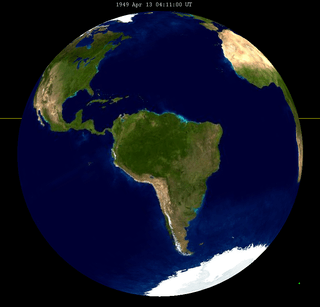
Related lunar eclipses
Lunar year series
| Descending node | Ascending node | |||||
|---|---|---|---|---|---|---|
| Saros | Date Viewing |
Type Chart |
Saros | Date Viewing |
Type Chart | |
| 111 | 1948 Apr 23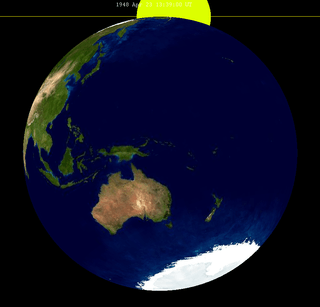 |
Partial |
116 | 1948 Oct 18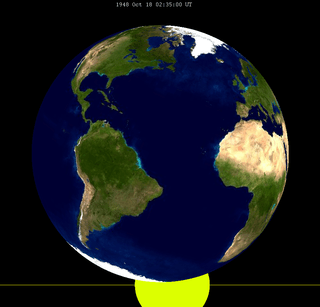 |
Penumbral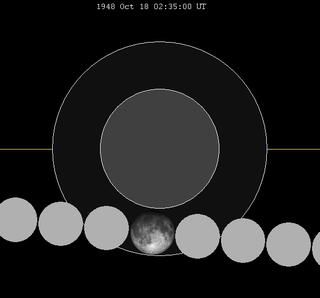 | |
| 121 | 1949 Apr 13 |
Total |
126 | 1949 Oct 07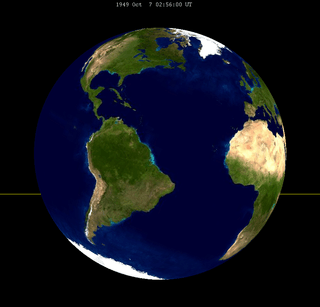 |
Total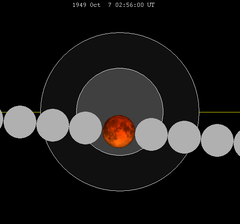 | |
| 131 | 1950 Apr 02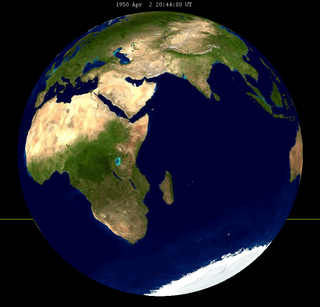 |
Total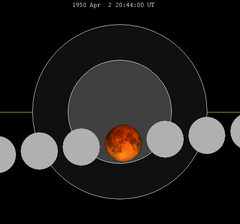 |
136 | 1950 Sep 26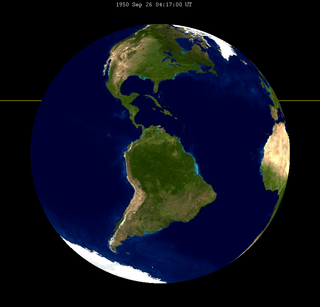 |
Total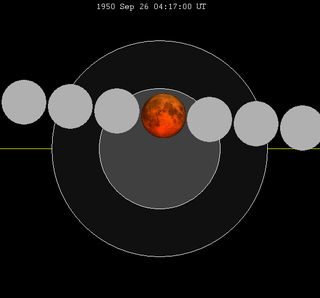 | |
| 141 | 1951 Mar 23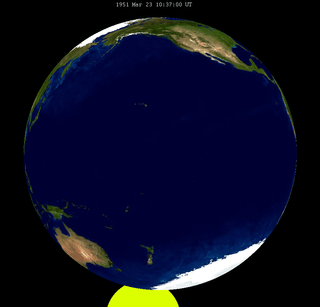 |
Penumbral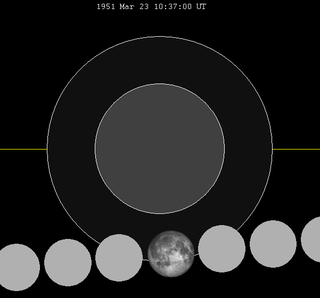 |
146 | 1951 Sep 15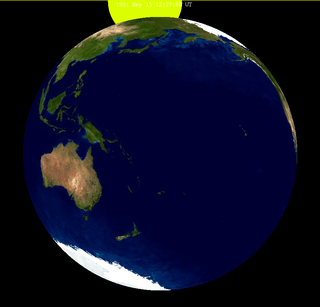 |
Penumbral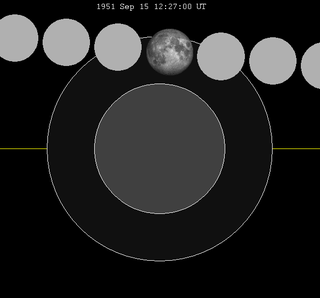 | |
gollark: Basically, you wanted three levels or something, so store those directly and multiply when actually doing IO.
gollark: (and replace `total -= 254./3.;` accordingly, obviously)
gollark: Make `total` into an int. Replace `total += 254./3.;` with `total = min(2, max(0, total + 1))` or something, if the arduinos' weird language has that. Do `analogWrite(LED, total * 85)`. QED.
gollark: Make the total an integer from 0 to 2 or something and enforce this, then multiply by 85 in the analogWrite bit.
gollark: The main issue is that data is just *data*, and can't corrupt itself in some way if you do stuff wrong or enforce timeouts, only the programs operating on it can (and generally do).
See also
- List of lunar eclipses
- List of 20th-century lunar eclipses
Notes
This article is issued from Wikipedia. The text is licensed under Creative Commons - Attribution - Sharealike. Additional terms may apply for the media files.
